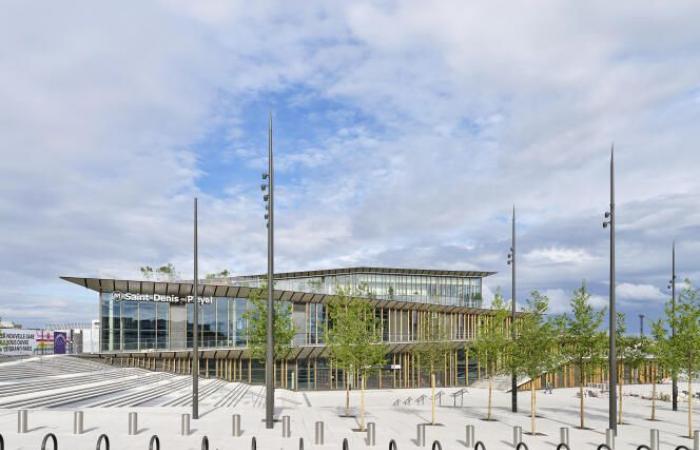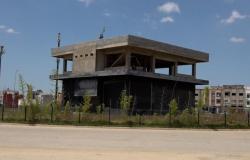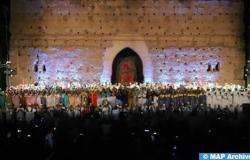It’s an understatement to say that it was expected. Strategic in the Olympic Games, the Saint-Denis-Pleyel station is both the flagship project of the Grand Paris Express, a major hub designed to connect lines 14, 15, 16 and 17 of the network as well as their cousins D and E of the RER, and its most precious jewel. The images produced by the agency of the Japanese Kengo Kuma, winner of the international architectural competition launched for these hubs in 2013, presented the building as an interweaving of angular and asymmetrical volumes set with a curtain of thin wooden columns, light as a house of cards. In the images of the project, a warm light emanated from it at night, breathing an unprecedented softness and refinement into the rough landscape where it was inserted, between the railway tracks and the Ornano-Pleyel crossroads, in Saint- Denis (Seine-Saint-Denis). Massively publicized, these representations have forged in recent years a very kind face at the Grand Paris Express. While tunnel boring machines ripped open the basements of Ile-de-France, while developers saturated the horizon of future stations with housing and office programs, they covered this pharaonic project with an almost magical aura.
What is it in reality, when the Saint-Denis-Pleyel station should be inaugurated by Emmanuel Macron, Monday June 24? The silhouette that emerges from the western part of Saint-Denis is distinguished by its stacked volumes (on four levels) with slight offsets, like bellows that have been nested one inside the other. A large step which rises gently from a very mineral esplanade, even if planted with small trees, a ramp which extends it in the opposite direction to reach, 9 meters above the ground, the entrance to the station and the footbridge that leads to the RER entrance give it a certain dynamic. But the effect is visual. The boxes may shrink as you rise, pivot a few degrees on each other, project overhang, drape themselves in origami-shaped envelopes, all in broken lines. , the orthogonal structure does not lie. Its massiveness brings back to the register of mirage the lightness that the images sold to us.
A retrofuturistic character
The woody quality, Kengo Kuma’s signature which seemed to form the identity of the project, was also diluted between the 3D representation and the hard work. The facade is well punctuated by oak sunshades (glued laminated, untreated), but glass and metal dominate. As for the structure, it is, logically for a project of this nature, made of concrete and steel. These shifts in perception could appear anecdotal if image did not play such a role in the selection of projects through competitions and in political communication. Kuma is not responsible for the situation. He only plays his part in a system which pushes architects to produce more and more fantasized images, at the risk of devaluing architecture as such. This should not obscure the real qualities of his work.
You have 64.99% of this article left to read. The rest is reserved for subscribers.







